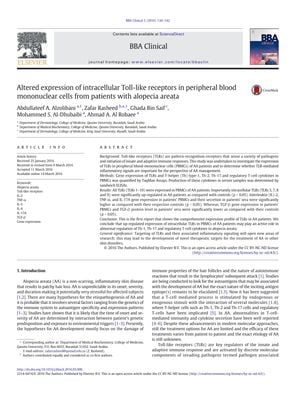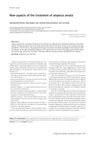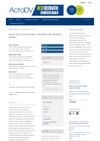Altered Expression of Intracellular Toll-Like Receptors in Peripheral Blood Mononuclear Cells from Patients with Alopecia Areata
March 2016
in “
BBA clinical
”

TLDR Increased Toll-like receptors in blood cells may contribute to alopecia areata and could be a target for new treatments.
This study investigated the expression of Toll-like receptors (TLRs) in peripheral blood mononuclear cells (PBMCs) from patients with alopecia areata (AA). It found that intracellular TLRs (TLRs 3, 7, 8, and 9) were significantly up-regulated in AA patients compared to controls (p < 0.05). Additionally, the gene expression and serum levels of cytokines IL-2, TNF-α, and IL-17A were significantly higher, while TGF-β levels were significantly lower in AA patients (p < 0.05). The study concluded that the up-regulated expression of intracellular TLRs might contribute to the abnormal regulation of Th-1, Th-17, and regulatory T-cell cytokines in AA, suggesting that targeting TLRs could lead to new therapeutic approaches for treating AA and other skin disorders.

